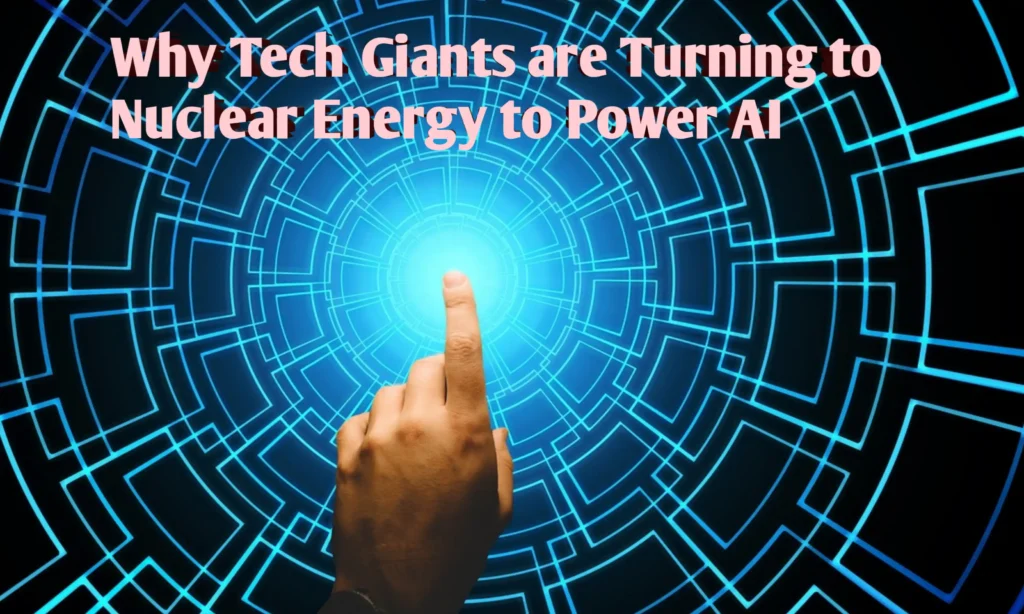Now, let’s talk about big tech. It’s going nuclear. And before you wonder, no, they’re not building bombs.

Silicon Valley is instead courting nuclear energy to power its pet project, artificial intelligence. You see, AI generation requires a lot of energy. Even one prompt consumes a lot of power.
And that is proving to be unsustainable for these companies. They’re already abandoning their climate commitments. So they have turned to the next best solution, and that is nuclear energy.
This way, they can go green, but also power AI. Microsoft, Google, and now Amazon have embraced this strategy. But could it backfire? Is nuclear power the solution for big tech’s energy needs? Our next report tells you.
For years, nuclear power has been synonymous with catastrophe. It brings to mind meltdowns, radioactive fallout, and gripping dramas. Humanity.has seen the worst of it.
So many argued we should leave it where it belongs, in the history books. But Silicon Valley has some other ideas. We live in a world where technology is growing at a record speed.
Artificial intelligence is already engulfing our lives. So big tech is bringing back nuclear power, this time to fuel the engines of AI. Recently, Microsoft made it to the headlines.
The reason was this nuclear reactor. It’s located on the notorious Three Mile Island. This was the site of America’s most infamous nuclear accident.
Now, Microsoft is reviving it. It’s giving the reactor a second life, this time to keep the servers of the future running at peak efficiency. And Microsoft isn’t alone.
Google, too, is tapping into nuclear energy. But it’s using small modular nuclear reactors. These are smaller and promised to be safer than the colossal reactors of the past.
Amazon has joined the nuclear race as well. It has signed a deal with Dominion Energy to build a new reactor in Virginia. The purpose, to supply Amazon Web Services with enough power to sustain its colossal data centers.
SMR, small modular reactors, are a huge piece of how we’re gonna solve this puzzle of getting to 100% clean electricity by 2035, while responding to all of the demand that will be created as a result of the data centers and the new factories, et cetera, that are coming online.
Now, these data centers are the heart of Silicon Valley’s AI revolution. You can ask ChatGPT silly questions, but remember, each question is consuming a lot of power.
For example, a year of using ChatGPT can power New Zealand for three months. Nigeria can run on that power for four months. So data centers are guzzlers of energy.
Currently, they consume around 4% of all electricity in the United States. By 2030, that number could rise to 9%. So AI is extremely power-hungry, and this is a problem for big tech.
They promised to go green, yet the technology they are investing in is pushing them away from that goal. Both Google and Microsoft pledged to be carbon-free by 2030, yet their emissions have only increased since 2020.
Microsoft’s emissions are up by 40%,. Google’s by 48%. So big tech is turning nuclear, because that’s the only answer that aligns with their climate commitments. How? Nuclear plants can operate at over 90% capacity.
That means they provide a steady stream of power without the downtime that solar or wind energy need. But the road is anything but smooth. In the last 10 years, the US has decommissioned seven nuclear reactors.
Only two were turned on. Plus, the challenge is not the science, it’s the regulations and public perception. People don’t mind solar farms or wind turbines. But a nuclear reactor in their backyard? That’s a different story.
Despite growing support in surveys, nuclear power battles an image problem. There are concerns about safety and radiation. So as Silicon Valley races towards an AI-dominated future, it finds itself at a crossroads.
Will nuclear power be the savior they need, or will regulations and stigma push them back? We don’t know yet. But one thing’s for sure, the energy landscape is changing. As AI grows smarter, how we use it will power our future.

